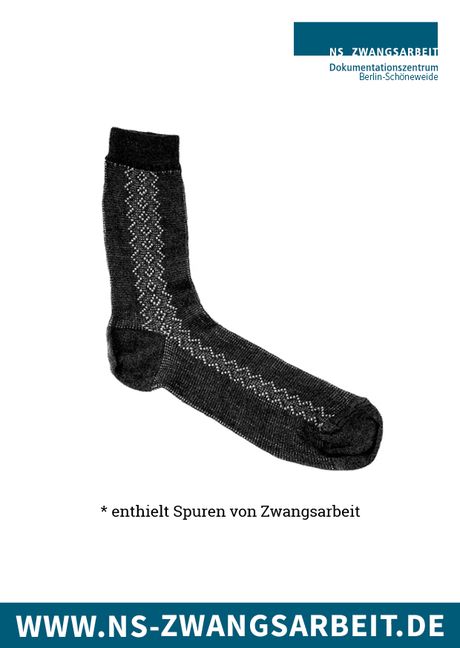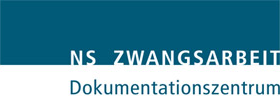Clothing - contained traces of forced labour
Making socks, sewing underwear, soling shoes - for thousands of people who had to perform forced labour in the German Reich during the Second World War, such activities were part of everyday life. At the same time, clothing served to stigmatise forced labourers during the Nazi era.
Forced labour was widespread in the German textile industry: Several thousand companies used forced labourers. Among them were many small manufacturers that no longer exist, but also clothing and shoe brands that are still well-known today, such as C&A, Hugo Boss or Salamander.
The then 16-year-old Vera Friedländer worked in a Salamander repair shop in Berlin-Kreuzberg in the winter of 1944/45. There she had to sort used shoes and check the seams. Later she found out that the shoes belonged to people who had been murdered in the Auschwitz extermination camp and other camps.
Vera Friedländer remembers: "I had to take the shoes in my hand, determine the damage and sort the pairs into other carts: for quilting, for gluing, for soling and so on. When a cart was full, I pushed it to where quilting, gluing or nailing was done. The carts rolled heavily. (...) They [the guards were SS men] made sure that we did nothing but work. We, that was Polish cobblers, women from Serbia, French workers, Jewish women, girls like Hannchen and me."
At the end of 1942, some companies in the textile industry began to produce particularly simple clothing especially for forced labourers, mainly outerwear and underwear, but also shoes made of wood. Such wooden shoes had to be worn, for example, by women like Janina Łyś, a Polish forced labourer at Pertrix in Berlin: "Nobody wore leather shoes, because they would have fallen apart after three months, there were only wooden shoes." These shoes were uncomfortable, it was hard to walk in them and the feet got infected.
Forced labourers not only had to sew clothes, but were also stigmatised by clothing. In concentration camps (KZ) they were forced to wear striped prisoners' clothing, which they had to make themselves in the SS-owned company "Deutsche Gesellschaft für Textil- und Lederverarbeitung mbH" in Dachau and Ravensbrück.
Even outside the concentration camps, people were marked on their clothing according to the racist Nazi ideology. Jews had to wear a "Jewish star" from September 1941 if they were older than six years. All those who were deported from Poland and the Soviet Union to the German Reich for civilian forced labour had to sew a piece of cloth with a "P" or "OST" badge onto their clothing. Only civilian forced labourers from Western Europe, who were ranked higher in the racist Nazi hierarchy, were spared this - they did not have to wear badges.

Numbers
About 26 million people from almost all over Europe had to work for the Nazi state in the German Reich and the occupied territories during the Second World War. Among them were prisoners of war and concentration camp inmates. The largest group was made up of the approximately 8.4 million civilian workers deported to the Reich: men, women and children from the occupied territories of Europe.
Many worked in the textile and clothing industry as well as in leather and shoe production. The SS even maintained its own company, the "Deutsche Gesellschaft für Textil- und Lederverarbeitung mbH", in which concentration camp prisoners had to perform forced labour. Since there has been no overall scientific account of the industry to date, it is not known how many forced labourers were employed in the textile industry in total.
Present
Forced labour is by no means a long-gone injustice. According to United Nations (UN) estimates, more than 40 million people are still victims of modern forms of slavery today. 29 million are women and children. A large proportion of them are used in the textile industry. In recent years, there have been repeated reports of companies selling clothes and shoes produced with the help of forced labour - also in Germany.
Andrew Forrest, founder of the Walk Free Foundation, which works closely with the United Nations, says: "The fact that 40 million people are still in modern slavery every day should make us blush. Modern slavery affects children, women and men worldwide. This documents the profound discrimination and inequality in the world, coupled with a shocking tolerance for exploitation. We must stop this. We can all help change this reality - in business, government, civil society and as individuals."
